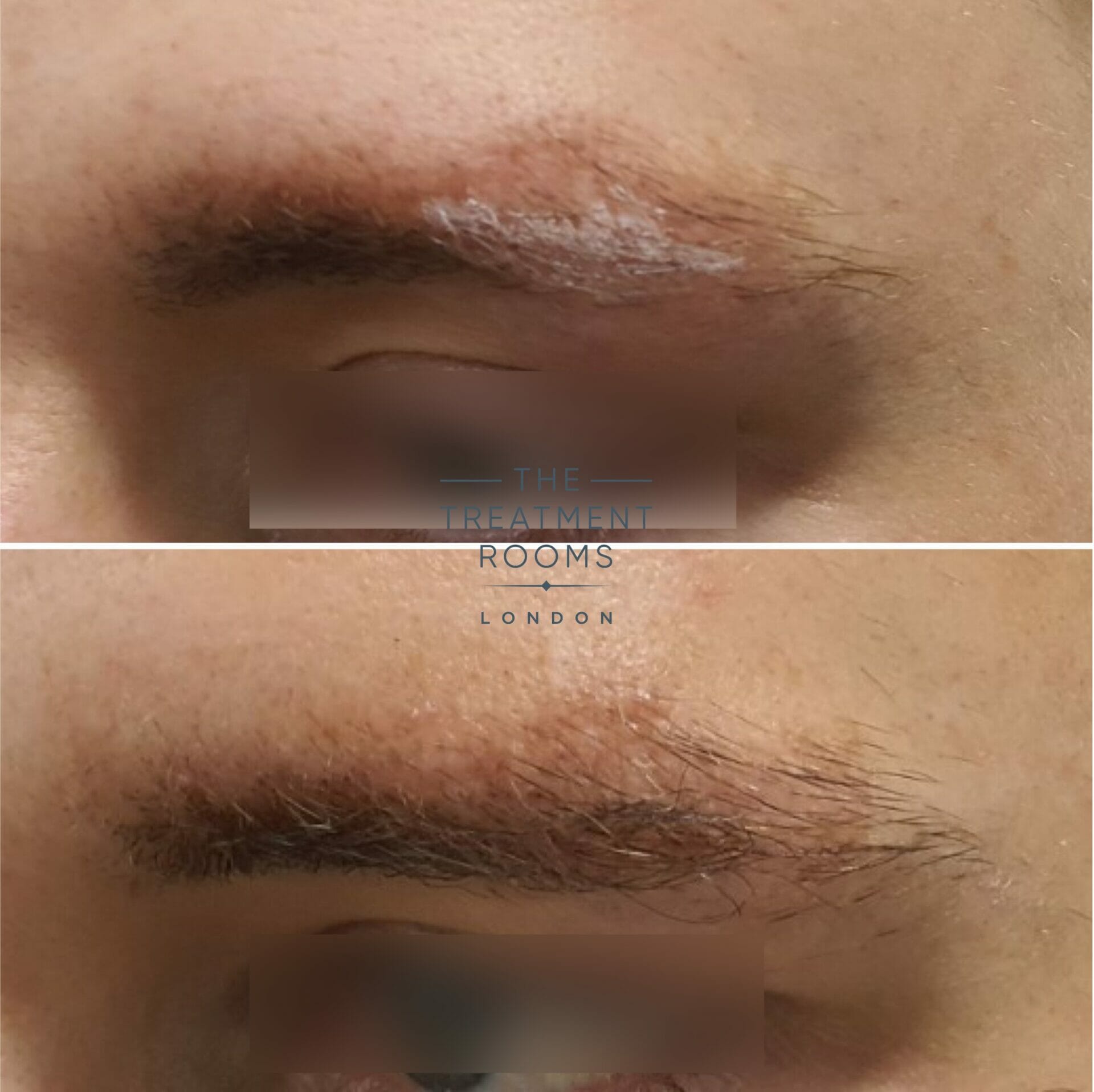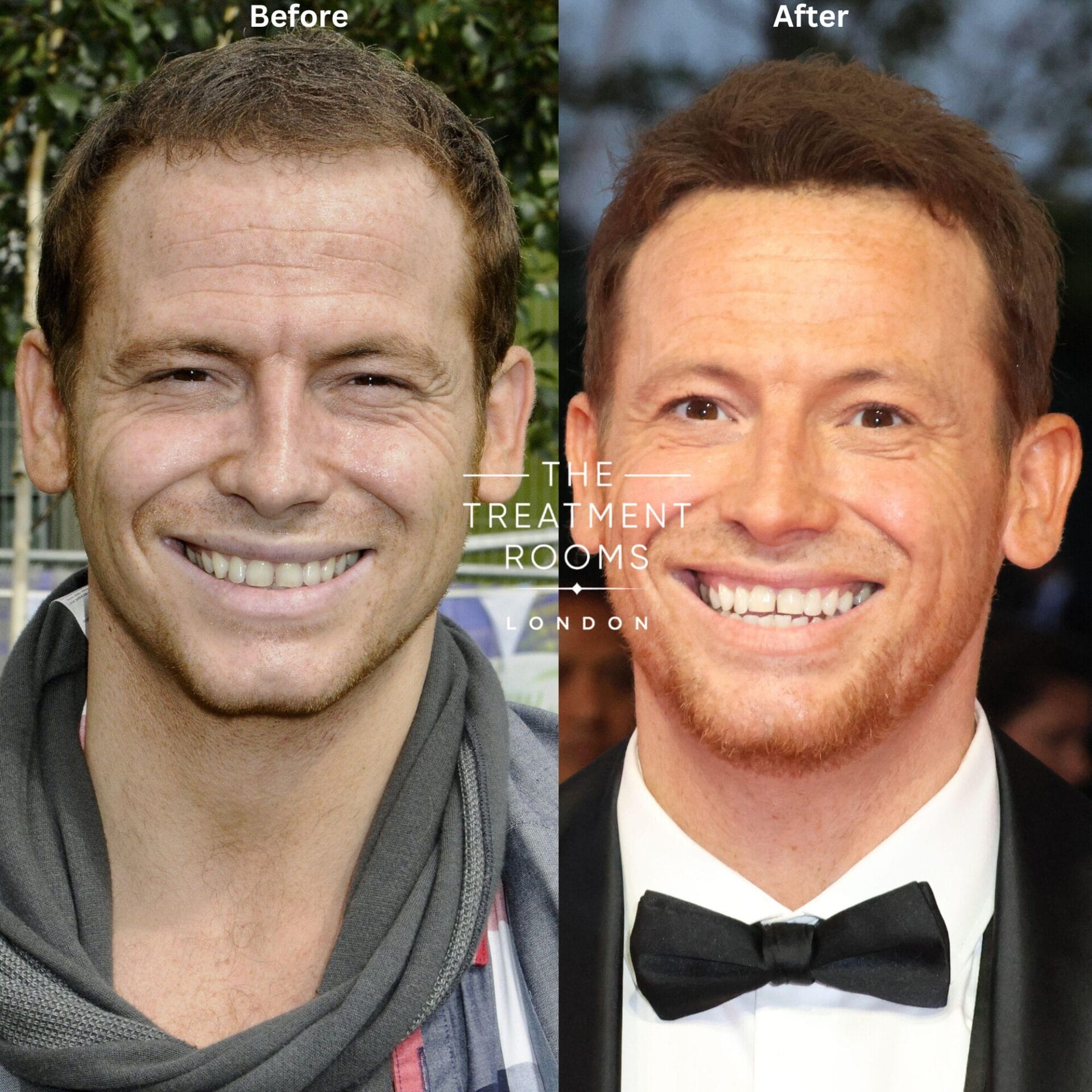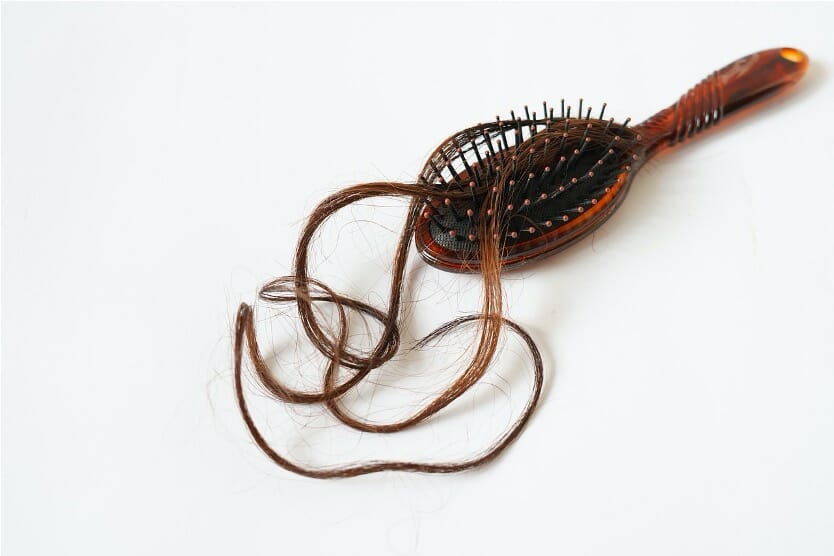Your eyebrow can become permanently damaged due to trauma and having the area stitched. This leaves a lasting scar on the eyebrow, affecting your overall appearance. The hair in this region will never grow back, regardless of whether you have thick or thin eyebrows.
Correcting the problem involves an eyebrow scar transplant. Performed by a hair transplant surgeon, it increases the thickness of the eyebrow, filling in the scarred region. An eyebrow hair transplant should provide permanent results for those with a scar in their eyebrow.
What is an Eyebrow Scar Treatment?
An eyebrow hair transplant for a scar is similar to other hair transplants. It involves harvesting hair follicles from the donor site for implantation into the eyebrow’s scar. Usually, hair follicles are taken from the back of your scalp1.
Depending on the scar, your surgeon can either fill in the gap or reshape your overall brow to create a new, fuller appearance that matches your original eyebrow shape. The end results should be natural.
Due to the precise nature of the transplant, it’s a highly demanding procedure. The surgeon must work precisely to achieve the best finish. Each hair follicle must grow in alignment with the others and have a similar texture and colouring.
What Happens During An Eyebrow Hair Transplant?
You may be given local anaesthetic that numbs your eyebrows and the area that hair is taken from. The surgery takes around 2 to 3 hours to complete.
The hair follicles can be harvested using two techniques: follicular unit excision (FUE), where individual hair follicles are extracted, or follicular unit transplant (FUT), where a strip of skin is removed. FUE is the preferred method for an eyebrow hair transplant.
FUE hair transplants involve2,3:
- The surgeon uses a puncture tool to remove each hair follicle one by one (usually from the back of the head).
- The donor hair follicles are trimmed to ensure each one fits into the recipient site. A small hole is made in the recipient site, in this case it would be an eyebrow scar, into which the follicle is inserted.
- Each hair follicle must be adjusted for direction to ensure it grows naturally with the rest of the eyebrow.
Most eyebrow hair transplants involve the removal and placement of 50 to 350 hair follicles. For a scar in the eyebrow, the exact number depends on the size of the scar and any other planned changes to the eyebrow.

Pros and Cons of an Eyebrow Scar Transplant
Pros of Eyebrow Scar Transplant
- The procedure corrects any absence or thinning of the eyebrow hair secondary to a scar, especially in those who have suffered from eyebrow hair loss
- It’s a permanent solution as long as the donor hair follicles remain healthy.
- It creates a natural look that should resemble your original eyebrow.
- If necessary, the overall eyebrow can be thickened and reshaped to improve upon the original.
Cons of Eyebrow Scar Transplant
- Depending on the extent of scarring in the eyebrow, there is a risk of uneven growth or unsuccessful integration of transplanted hair follicles.
- It may take several months to see the full results as the hair grows and settles into the area.
Recovery Time for an Eyebrow Hair Transplant
Immediately following the procedure, you are safe to return home. You might notice some minor bruising or swelling in the following days. Your surgeon may advise you to take pain medication and anti-inflammatories, such as over-the-counter (OTC) paracetamol or ibuprofen. This can help reduce the tenderness and swelling.
The bruising and swelling will subside within a week or so. During this time, the eyebrow will scab over – it’s tempting to pick at the site, but you must resist the urge. The scab will loosen and fall off within 5 to 7 days. If you pick at the scab, you can damage the implanted hair follicles, reducing the success of the transplant.
Once the initial recovery phase has passed, the transplanted hair follicles will enter a resting phase, during which the newly transplanted hairs may shed. You may notice redness in the eyebrows for a few weeks before this subsides. This is a normal part of the process and should not cause concern. Over the next three to six months, new hair growth will begin, with the full results becoming visible around 12 months post-procedure. To maintain the best results, you will need to regularly trim or shape the transplanted hairs, as they will grow at the same rate as the donor site hair. Your surgeon may also recommend follow-up appointments to monitor progress and address any concerns.
Eyebrow Scar Hair Transplant Timeline
New hair growth from transplanted follicles typically begins around three months after the procedure. It’s normal for the transplanted hairs to shed within the first-month post-surgery, which can be concerning but is a temporary and expected part of the process.
By eight months, most of the new eyebrow hair will have grown in, with final results becoming visible around the 12-month mark. If the results are not as desired after a year, additional transplants can be considered.
Studies have shown that excellent results are achievable when the procedure is performed by an experienced surgeon using advanced techniques.
How Long Does an Eyebrow Scar Transplant Last?
If everything goes according to plan, the results are permanent. The donor hair follicles will need several months to settle in fully. However, if they remain undamaged, they will continue to function indefinitely.
One key difference is how fast the hair grows. Because the donor follicles come from the scalp, the hair will need trimming every 7 to 14 days. Natural eyebrow hair typically grows slower than hair on your scalp.
Potential Risks of Having Your Eyebrow Scar Transplant
Every surgical procedure carries risks. As with other hair transplants, the most relevant risk is that the new hair follicles won’t take4. Usually, this means you see no new hair growth. However, it’s unlikely that all the implanted hair follicles fail collectively. If this happens, you may opt to have the procedure again in the future.
Other potential risks include:
- Bruising
- Scarring
- Swelling
- Excessive Bleeding
- Nerve Damage
- Infection
Bruising and swelling are a normal part of the procedure caused by surgical trauma. This isn’t permanent. Excessive bleeding usually isn’t a problem. However, some individuals may notice more blood than others, which is why a transplant isn’t suitable for individuals with bleeding disorders.
Nerve damage is more severe. The surgeon may either cut or impinge the nerve, reducing muscle movement and sensation. This may or may not be permanent.
Infection occurs when bacteria, viruses, or fungi enter the transplant site. You will notice redness, swelling, pain, and even pus. It’s a major red flag. Speak to your surgeon if you notice any of these signs. You can avoid infection by following the post-surgical instructions and keeping the transplant site clean.
Receive Expert Eyebrow Scar Treatment
Your eyebrows may be very important to your appearance. If your eyebrow is damaged and has a scar, we can fix the issue by rebuilding them with an eyebrow hair transplant. The Treatment Rooms London provides an eyebrow hair transplant using the follicular unit excision (FUE) or FUT technique. We achieve a natural, lasting look that transforms your appearance.
Interested in learning more? Book a consultation with an experienced surgeon to find out if surgery is right for you. Share your concerns and objectives with our team, and let us guide you through the process.
References
- Healthline. What to Expect from an Eyebrow Transplant: Procedure, Cost, and Side Effects. Available at: https://www.healthline.com/health/eyebrow-transplant
- Dua A, Dua K. Follicular unit extraction hair transplant. Journal of cutaneous and aesthetic surgery. 2010 May 1;3(2):76-81.
- Rajput RJ. Hair transplant for eyebrow restoration. Indian Journal of Plastic Surgery. 2021 Dec 14:489-94.
- Garg AK, Garg S. Complications of hair transplant procedures—causes and management. Indian Journal of Plastic Surgery. 2021 Oct;54(04):477-82.
Share:
Authored by
Reviewed by
Book a Consultation
Related Blogs
Jack P Shepherd Hair Transplant: Before, After, and His New Hairline
March 12, 2025
Jack P. Shepherd is best known for portraying David Platt in Coronation Street for over two decades….
Jimmy Carr Hair Transplant: Before, After, and His New Hairline
March 12, 2025
As one of the most popular British comedians the complete change in Jimmy Carr’s hairline was a…
Folic Acid and Hair Loss
March 12, 2025
Quick Summary Hair loss is a widespread concern that affects millions of people globally. While genetics, hormonal…
Andros Townsend Transplant: Before, After, and His New Hairline
March 11, 2025
He’s best known for his days spent kicking a ball around, but Premier League footballer Andros Townsend…
Harry Kane Hair and Hairline
March 11, 2025
Harry Kane has suffered from a common condition of hair loss called male pattern baldness. This has…
Joe Swash Transplant: Before, After, and His New Hairline
March 11, 2025
Former ‘EastEnders’ actor and ‘I’m a Celebrity’ contestant Joe Swash has spoken very candidly about receiving multiple…
Guide To Finasteride For Hair Loss
March 4, 2025
One of the main effective medications in treating hair loss is Finasteride, which is often prescribed to…
When Can You Safely Wear a Beanie After a Hair Transplant?
March 1, 2025
Quick Summary Cap Recommendations: Light, breathable caps like snapbacks or trucker’s caps are advisable if you need…
Dutasteride and Hair Loss
February 23, 2025
Dutasteride is a medication that can be prescribed to men suffering from male pattern hair loss (androgenic…











